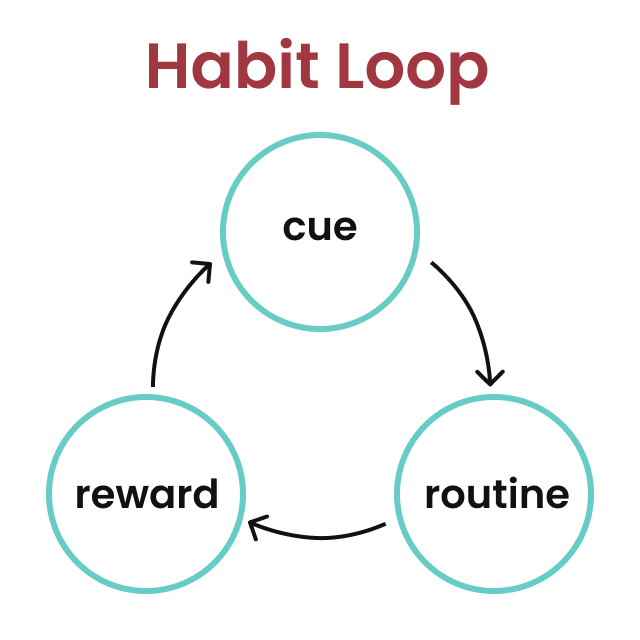How to Train When You Don’t Feel Like It (and Why That Matters Most)
We all have those days. You planned to work out—but now that it’s time, your body feels heavy, your mind’s elsewhere, and motivation is nowhere to be found. You start to wonder: Is this really that important? Maybe I should skip it. Maybe I’m just not the kind of person who sticks with this.
If that sounds familiar, you’re not alone. Every consistent exerciser has faced this exact moment—tired, distracted, and tempted to hit pause. But here’s the truth: these are the moments that matter most. Not the easy sessions when you feel unstoppable—but the hard ones, when you show up anyway.
Because every time you train when you don’t feel like it, you cast a vote for your future self. You remind your body and brain: this is who I am now.
With the right tools, those hard starts can become powerful wins. Let’s talk about how.
If you’re still working on making exercise feel automatic, check out Ultimate Guide to Building an Exercise Habit.
Why These Moments Matter More Than You Think
We all want workouts to feel easy and natural. And they will—eventually. But here’s a little-known truth: the days you don’t feel like training matter more than the days you do.
Why? Because they shape two powerful forces that make fitness stick for good.
First, they shape how you see yourself. Every time you show up when it’s hard, you’re proving something: I’m someone who trains anyway. Not just when it’s convenient, but because it’s part of who I am. That’s how identity starts to shift—from “someone who wants to be fit” to “someone who doesn’t feel right without training.”
Second, they build the habit. Your brain learns to expect movement at certain times—after work, before breakfast, whenever you’ve chosen. And the more often you follow through, the more automatic it becomes. Eventually, it takes more energy to skip than to show up.
But here’s the part most people miss: resistance isn’t just an obstacle—it’s an opportunity. The harder it feels, the bigger the win if you move anyway. You’re not just getting through a workout—you’re rewiring your brain and reinforcing your identity.

So the next time you’re tempted to skip, remember: this could be the moment that matters most.
In the next section, let’s dig into what’s really behind that resistance—and how to outsmart it.
The Real Reasons You Don’t Feel Like Training
We all hit walls—even the most disciplined athletes. Understanding why you resist is the first step to moving past it. Here are the four most common culprits:
1. Fatigue
Your body and mind can both run on empty. Maybe you stayed up late, packed your day with back-to-back meetings, or crushed a heavy session yesterday. Physical fatigue calls for a lighter touch—swap a hard run for a brisk walk or skip the last set in the gym. But mental tiredness? A short workout can actually boost your energy, clear brain fog, and shake off that couch-potato feeling.
Key takeaway: Listen to your body, but don’t let mental tiredness keep you grounded. Even 10 minutes of movement can recharge you.
2. Stress & Overwhelm
When deadlines loom and personal life demands your attention, everything else can feel like a burden—including exercise. Yet research shows light to moderate activity reduces stress hormones and floods your brain with mood-lifting chemicals. Just avoid pushing so hard that the workout becomes another source of stress.
Key takeaway: Use training as a pressure-release valve—choose something gentle when life is hectic.
3. Perfectionism
If you believe a workout has to be perfect to “count,” you’ll often choose to skip. That all-or-nothing mindset kills consistency. Instead, remind yourself: any movement is better than none. A five-minute routine or a single strength exercise still fuels your habit and reinforces your identity as someone who shows up.
Key takeaway: Ditch the all-or-nothing trap. Small, imperfect efforts still move you forward and yield better results in the long-term.
4. Low Mood or Motivation
Motivation isn’t a switch you can flip—and moods ebb and flow. When your habit isn’t yet automatic, these dips feel especially heavy. But each time you push through, you’re telling your brain, “This is who I am.” Those “I don’t feel like it” days are your greatest opportunities to solidify both habit and identity.
Key takeaway: Recognize these days as growth moments—choose action over inertia, even if it’s just a few minutes.
Knowing the why behind your resistance is empowering. Next, let’s explore simple, science-backed strategies to overcome it—and actually get moving when you don’t feel like it.
Simple Strategies to Train Anyway
When motivation is low, these three tactics can help you overcome resistance and keep your habit on track.
1. Lower the Bar
What it is: Choose the smallest possible workout you can do right now—five minutes of movement, one set of bodyweight exercises, or a brief walk. Pick something so easy that it feels doable even on your worst days.
Why it works: Completing even a tiny session triggers a sense of accomplishment and keeps the habit loop active.
2. Start Acting—Motivation Follows
What it is: Begin with a simple action—slip on your shoes or start your warm-up—without worrying about the full workout.
Why it works: Behavioral activation shows that action sparks emotion. Once you’re in motion, your energy and motivation naturally rise.
3. Reconnect with Your “Why”
What it is: Take a moment—literally 30 seconds—to remind yourself why you committed to training in the first place. Recall the benefits you value most: more energy, stress relief, confidence, longevity, or simply feeling like your best self.
Why it works: Decisions made when you felt inspired reflect your core values. Revisiting those values shifts you from a reactive mindset (“I don’t feel like it”) to a proactive one (“This matters to me”). Research shows that aligning actions with personal values increases persistence and helps you push through low-motivation days.
On days when motivation is low, simply getting started becomes the goal itself—and showing up is enough. More often than not, you'll accomplish more than you expected. Let's explore how this works.
The Psychology Behind “Just Starting”
It may feel counterintuitive, but the simple act of beginning—even before you tackle your full workout—can dissolve the resistance holding you back. Here’s the magic in motion:
- You take the first step. Whether it’s lacing up your shoes, changing into workout gear, or doing a quick warm-up, that small action sends a clear signal to your brain: “We’re doing this.”
- You trigger a mini dopamine hit. That little rush of satisfaction—I did it—lightly rewards your effort and nudges your mood upward.
- Motivation follows motion. As your energy rises, the next exercise feels more doable and the fog of fatigue begins to clear.
- Momentum builds. Each subsequent step strengthens these effects, making it easier to keep going and, next time, to start even sooner.
This “behavioral activation” loop—action sparking emotion, emotion fueling further action—doesn’t wait for perfect conditions. In fact, it thrives on imperfection. There’s no need for a flawless workout: showing up is the real win.
So the next time you’re stuck in paralysis by analysis, remember: just start. Celebrate that first step, because it’s the catalyst for everything that follows.
Setting Yourself Up For Success: Steps to Lower Resistance
Having tools to get moving when motivation is low helps—but what if we could reduce resistance before it starts? Let's explore some proven methods.
Anchor to a Cue
Make training predictable. Choose a consistent time or tie it to an existing habit—like starting your workout right after brushing your teeth or getting home from work. These cues make starting automatic, which removes the need for willpower.
Prime Your Environment
Lay out your workout clothes. Pack your gym bag the night before. Set a visible reminder. These simple steps reduce friction and trigger your workout mindset—making it easier to start, and harder to skip.
Use Accountability
Log your workouts in an app, share your goals with a friend, or train with a workout buddy. These tools may add just enough pressure to help you follow through when you’re tempted to bail.
The key is to eliminate decision-making when the moment arrives. The more you plan and prepare in advance, the easier it becomes to start—and the fewer excuses you'll have for skipping your workout.
How to Reflect After a Low-Motivation Workout
When the workout is done—especially one you almost skipped—it’s tempting to just move on with your day. But take a moment. These workouts are more than just reps and sweat. They’re the foundation of something much deeper: the habit you’re building, and the person you’re becoming.
Savor the Reward
According to behavioral psychology, habits form through a simple loop: cue → routine → reward. That last part—the reward—is where the real magic happens. When you finish a workout you didn’t feel like doing, you’ve earned more than just a checkmark—you’ve earned a lift in mood, a spark of pride, a sense of momentum.

But here’s the trick: to help the habit stick, you need to recognize the reward. That’s why something as simple as logging your workout in an app can be so powerful. When you check it off, track your progress, or see your streak grow, you’re reinforcing the idea that “this matters.” You're giving your brain a clear and satisfying signal: well done, keep going.
The more you pause to notice that feeling—whether it’s physical energy, emotional relief, or pride in following through—the stronger that positive feedback loop becomes.
Reframe What “Success” Means
If it wasn’t your best workout, that’s okay. You weren’t trying to break records today—you were trying to show up anyway, and you did. That’s a win. This kind of reflection is called cognitive reappraisal—you’re choosing to see the value in the effort, not just the outcome. That mindset builds consistency far more than chasing perfection ever could.
Practice Self-Compassion
There’s no need to criticize yourself for not feeling motivated. Motivation naturally fluctuates. What matters is how you respond when it dips. Be kind to yourself. You did the thing. And next time will feel a little bit easier because of that.
Reinforce the Identity You’re Building
Every time you train when it’s hard, you cast a vote for the kind of person you want to be. Remind yourself: I’m someone who trains even when I don’t feel like it. That thought might seem small, but it carries weight. It shapes your identity and, with time, makes these moments feel less like battles and more like choices you’re proud of.
Conclusion: The Power of Showing Up
The workouts you do when you don’t feel like it are the ones that shape you the most—not just physically, but mentally and emotionally. They’re the moments that strengthen your identity as someone who follows through, someone who trains even when it’s tough.
You don’t need to be perfect. You don’t need to crush every session. You just need to show up—especially on the hard days. Because every time you choose action over hesitation, you’re reinforcing your habit, rewriting your story, and building a version of yourself you’ll be proud of.
So the next time resistance hits, remember: it’s not a signal to stop—it’s an invitation to grow.
You’ve got this. Keep showing up. That’s how real, lasting change happens.
👉 Log your next workout—even if it wasn’t your best.
That checkmark is more than a record. It’s a reminder: you did it anyway. And that’s how habits are built.
“You don't have to feel ready. You just have to show up. The rest will follow.”




